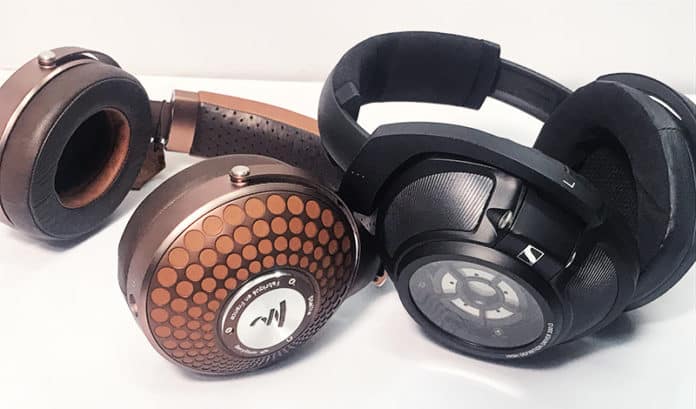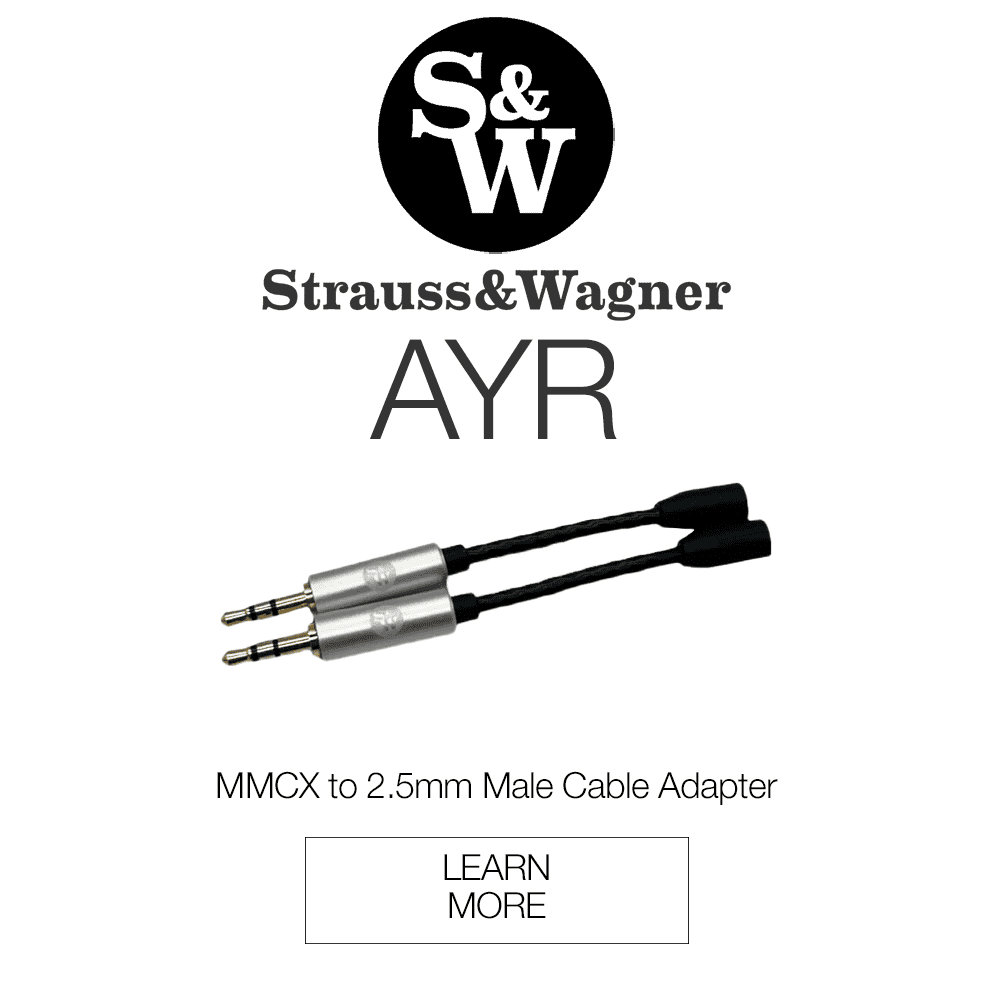For most people, the newest closed back headphone from Focal is unattainable. At $2999, it is a headphone reserved for the only the most serious audiophiles. But if this price point didn’t scare you off yet, you’ve probably also had your eyes on the Sennheiser HD 820. Both of these cans are their brand’s flagship closed-back headphones. So which one is a better candidate for you? Today, let’s take a closer look with this Focal Stellia vs Sennheiser HD 820 Comparison Review.
Comparing Focal Stellia vs Sennheiser HD 820 Headphones
In the Box
| Focal Stellia | Sennheiser HD 820 |
| Focal Stellia headphones | Sennheiser HD 820 headphones |
| 1.2 m cable with 3.5 mm connector | 3 m cable with 6.35 mm connector |
| 3 m balanced cable with 4-pin XLR connector | 3m balanced cable with 4.4 mm connector |
| 3.5 mm to 6.35 mm adapter | 3 m balanced cable with 4-pin XLR connector (optional) |
| zipping rigid travel carrying case | wooden storage box |
| leather storage case | documentation |
| documentation |
Design
Look and Feel
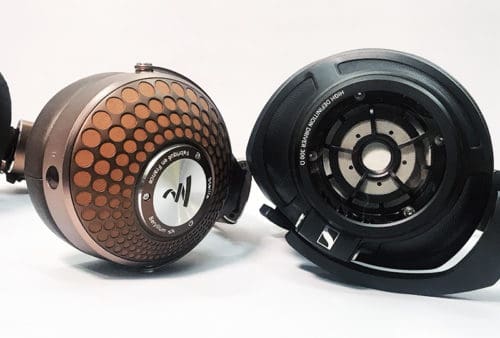
The looks of the Focal Stellia and the Sennheiser HD 820 fulfill different aesthetic tastes. On one hand, the Stellia’s brown leather feels rustic. This feeling contrasts with the chrome colored accents and flashy precision of the pattern on the earcup.
By contrast, the Sennheiser HD 820 invokes a sense of machinery. It has a more mechanical, futuristic feel to its aesthetic with its black, geometric angles and its clean view of the inner workings of the earcup.
So while both headphones feel quite different in who they might attract, one commonality is their sense of excellence and quality. Both are made of high quality materials. Their frames are made of aluminum. Both use leather in their earpads. And while both have different shapes to their design of headband and earcups, both are remarkably comfortable.
Portability
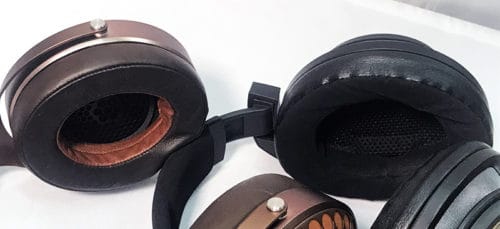
When I hold the Focal Stellia and the Sennheiser HD 820 side-by-side, it is clear that the HD 820 weighs less. However, when considering which one I’d rather travel with, I would pick the Stellia.
First, the Stellia comes with a more portable carrying case. And for such a high price, I would feel annoyed having to purchase a separate case for the HD 820. The HD 820’s box is a beautiful wooden black box, but it is certainly not made to travel at all. By contrast, the Stellia’s case is protective, has a zipper and handle and would easily fit in a backpack.
Secondly, the Focal Stellia has better sound isolation. Compared to the Sennheiser HD 820, the Stellia has a slightly firmer clamping force. It isn’t over-the-top, but that little extra squeeze, combined with the closer fit of the earpads’ holes around my ears makes the outside noise quieter around me.
Lastly, the Focal Stellia is easier to drive than the Sennheiser HD 820. Now, if you’re a big audio nerd (which you must be if you’re considering spending over $2000 on a pair of headphones) you probably have or feel good about buying a nice and powerful portable DAC/amp like the Chord Mojo or iFi Micro iDSD Black Label. However, it is worth mention how easy it is to drive the Stellia. I could drive it with my phone if I wanted to, but can also drive it easily with a DAP’s internal amplifier. The HD 820 is a bit more power hungry and will require more dedicated amplification.
As a result, I would recommend looking toward the Stellia if you plan on bringing these headphones around, for example, to and from the office. However, if you know your headphones will live at home or in a more stationary situation, look toward the HD 820.
Sound
Low Frequencies
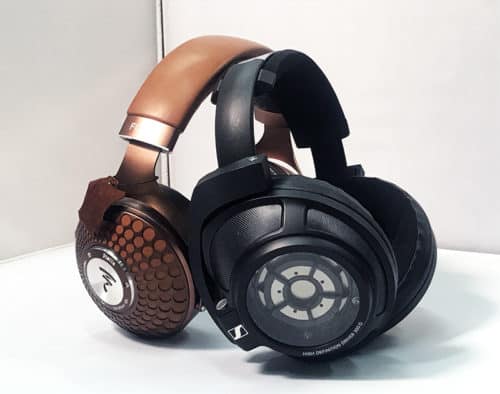
The low frequencies of the Focal Stellia and Sennheiser HD 820 are quite different from each other. While both have a sense of extension, the Stellia’s low end has more energy and level than the HD 820. The HD 820’s lows are modest in volume, although have a feeling of evenness and realism to them. The Stellia’s lows have emphasis in the sub region as well as the area where the fundamental frequency of many kick drums sit. As a result, the Stellia makes the low end feel vivid and lively, whereas the HD 820’s low end feels modest, yet realistic.
And while these low frequencies are so different between the two cans, they both benefit from a sense of quick dynamic activity in the lows, providing a sense of punchiness and emotional impact.
For example, when I was listening to the song I’m Callin’ by Tennis, the kick drum moved more air when I listened with the Focal Stellia than the Sennheiser HD820. That added loudness and energy of the kick contributed to its grooviness in the song. Additionally, the emphasis of the kick focused on the weight of it in the lows.
By contrast, the emphasis of the kick drum when I was listening to the Sennheiser HD 820 was focused more on the beater of the drum, rather than the weighty body of it. And while the kick was quieter in the mix, it maintained a sense of punchiness because of the active dynamics of the 820. Additionally, the lows in general felt even and with the 820 and even had a small, although quiet, sense of extension.
Middle Frequencies

The middle frequencies of the Focal Stellia and Sennheiser HD 820 have some similarities, although they emphasize different areas of the midrange. On one hand, the Stellia has more energy in the low-mids. As a result, it has a greater sense of thickness than the HD820.
Both headphones have an even middle part of the midrange. As a result, they both support harmonic complexity for midrange instruments. Additionally, both headphones handle the high-mids similarly. The lower region of the high-mids has a bit of a cut, whereas the higher part of the high-mids is boosted. As a result, there is a sense of spaciousness in both headphones between the middle part of the midrange and where the vocals sit. It makes vocals lean toward the face and throat rather than the chest.
For example, when I was listening to the song No Dad by Taylor Hollingsworth, Taylor’s vocal leans toward the face with both headphones. His voice sounds similar in both headphones, although has a little less body with the HD 820.
The most obvious way the different midranges affects this song is audible in the tone of the electric guitar and bass guitar. The guitars are highly distorted and crunchy sounding. With the Focal Stellia, the guitar feel thicker and fuller and have a texture that resembles the word, “crunch”.And while the bass guitar and electric guitar blend together based on how they were mixed, I can feel more of the depth of the bass, giving it a greater sense weight.
By contrast, when listening with the Sennheiser HD 820, the bass feels quiet, and I’m not so sure I could hear it. However, the emphasis on the electric guitar is more toward the high mids and highs. As a result, the texture feels different, and closer resembles the word, “fuzz”. It’s a smoother sounding texture than the crunchiness of the guitar with the Stellia.
High Frequencies
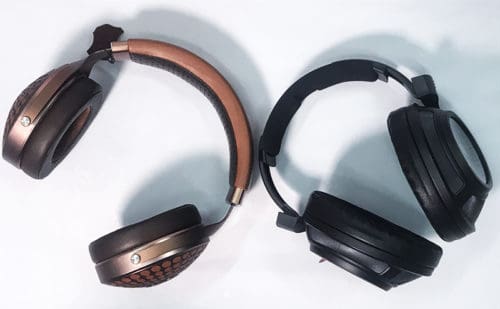
The high frequencies of the Focal Stellia and Sennheiser HD 820 have emphasis, although feel quite different from each other. Overall, the Stellia’s highs feel more colorful and less realistic than the HD 820’s. They have emphasis in areas throughout the high frequency spectrum, but they aren’t particularly even sounding. And while the headphones can reproduce a sense of airiness, they emphasize the textures of the upper treble.
By contrast, the high frequencies of the Sennheiser HD 820 feel more spacious and extended than the Stellia. And while the 820 emphasizes the lower treble a little bit and the upper octave, the highs feel more even and realistic than the Stellia. They feel particularly harmonically complex, making them great for classical music. However, they also add a pretty sense of air to vocals, cymbals, strings, bright synths, and other instruments with high frequency information.
For example, when I was listening to the song I’ll Show You by Justin Bieber, both headphones revealed the airiness in Justin’s voice. However, the Focal Stellia emphasized the snare sound and dancing high hats.
By contrast, the Sennheiser HD 820 emphasized a higher part of the air on Justin’s voice. Aesthetically, the highs are smooth and revealing, and they contributed a sense of prettiness to the bright, airy synths.
Soundstage
The soundstage of the Focal Stellia and Sennheiser HD 820 are remarkable for closed back headphones. Both have a sense of 3-dimensionality that helps bring a greater sense of life to music that one might otherwise experience.
The Focal Stellia’s strength lies in how it reveals the complexity and fullness of room mics and reverbs. It has a good sense of width, and a nuanced, wide-ranging feeling of height. It shows depth, while maintaining a sense of vocal intimacy.
However, for how nice the soundstage of the Stellia is, the Sennheiser HD 820 has a more expansive sense of width and depth. It has a nuance to the depth, which makes it particularly impressive for thick arrangements.
For example, when I was listening to the song Miles Runs the Voodoo Down by Miles Davis, the Sennheiser HD 820 helped the instruments feel like they were placed specifically at points in space. Because of the boost in the upper area of the high-mids, the Focal Stellia’s sense of depth brought all the midrange instruments (horns, guitars, keys, etc) closer in space.
Overview
Overall, both the Focal Stellia and Sennheiser HD 820 are amazing options for high-end closed-back headphones. The Stellia is better for those looking for a thicker midrange, or for headphones that favor rock, pop, hip-hop, and indie music. Additionally, the Stellia is better for those looking to bring their headphones on-the-go because they have a protective travel case, are easier to drive, and has better sound isolation than the HD 820. For those who like a more realistic, harmonically complex high-frequency response for the strings of classical music or the rich cymbals of jazz, or the airiness of the vocals of singer-songwriters, turn your attention toward the Sennheiser HD 820. It is super comfortable for long listening sessions at home, and has a soundstage that brings music to life.
The Focal Stellia and the Sennheiser HD 820 are available for the best price here:
MajorHiFi may receive commission through retail offers.
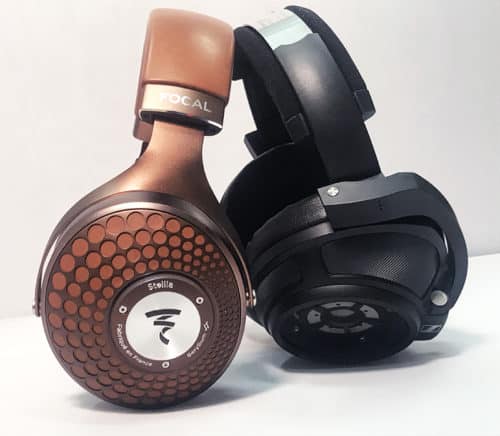
Specifications
| Focal Stellia | Sennheiser HD 820 | |
| Type | over-ear, closed-back | over-ear, closed-back |
| Impedance | 35 ohms | 300 ohms |
| Sensitivity | 106 dBSPL @ 1 kHz/1 Vrms | 103 dBSPL/1 mW @ 1kHz |
| Frequency Response | 5 Hz – 40 kHz | 12 Hz – 43.8 kHz |
| Weight | 435 g | 360 g |
Compare the ranking of various headphones, earbuds and in-ear monitors using our tools.
Discuss this, and much more, over on our forum.
---MAJORHIFI may receive commissions from retail offers.


